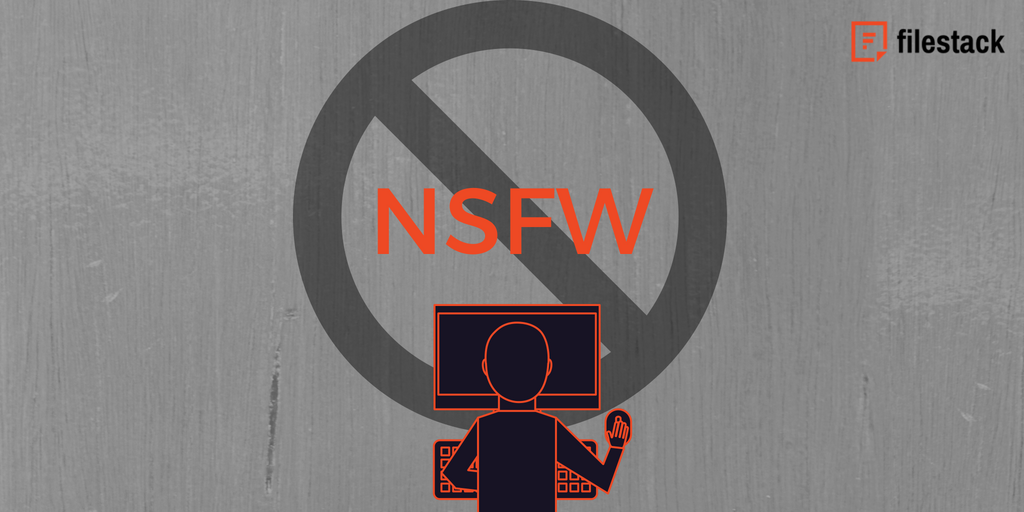When you’re providing content, you want to make sure that it’s safe for your audience and appropriate for the topic at hand. NSFW content can sideline the conversation by causing an embarrassing gaffe. Flagging and removing content that is unacceptable or NSFW keeps the focus on acceptable content and boosts productivity, but doing so takes time. Machine learning can help curb the use of NSFW content where it’s not appropriate. See how machine learning detects inappropriate content and how this technology can be useful to ensure your digital assets are on message and boost productivity.
What is Machine Learning?
Machine learning is a subset of AI that uses algorithms to help computers learn by making predictions based on data, and it is already widely used in the workplace. Some applications of machine learning include email filtering and network intruders.
There are many techniques through which computers can learn, from a simple decision tree style of learning for predictive analysis to complex or deep learning, where computers try to model the human brain’s way of processing information. Speech recognition is one example of deep learning.
As these example illustrate, machine learning has a lot to offer workplaces and online learning spaces. Machine-directed predictive analyses can help with complex decision-making by simplifying options. Fast detection of network intruders can prevent a data breach by quickly alerting IT staff to the intrusion. Machine learning simplifies the onboarding process for customers or new employees by, for instance, walking people through a new client or new hire form and identifying omissions or errors in the form that would otherwise need to be checked by someone in HR.
These are just a few examples of how machine learning makes workplaces more productive. Now that you see how machine learning benefits the modern workplace, find out how the field connects to NSFW content.
Object Detection for NSFW Image or Video Content
When it comes to working with NSFW video or image content, one aspect of machine learning, object detection, helps classify and categorize images.
Object detection examines objects, such as photos, to “see” not only the image but the different components that comprise it. From here, you can train a model to identify explicit content
Explicit content detection is of most interest when it comes to flagging inappropriate content. Workplaces can set up rules for content, then use object detection to check for content that violates the rules, such as pornographic content. Other content you may wish to blacklist includes violent or gory content.
It may sound crazy that a computer can actually tell if something is NSFW or not, so here’s an example of how it works.
Computers can be taught to see things using computer vision. By training computers on detecting flesh colors, computers can scan images for large skin-colored patches. Computers can then check the skin-colored patches for limbs and analyze what they see. A flesh-colored arm may not be cause for concern, but two flesh-colored bodies pressed together could indicate nudity that runs afoul of your rules. Through neural networks, computers can learn that certain objects suggest NSFW or its opposite, SFW. For example, exposed navels are common in nude shots but also found in acceptable photos. If every image that contains a bellybutton is flagged as NSFW, machine training can teach the computer that navels are SFW.
By using machine learning to flag content, you can make sure there’s nothing that’s NSFW without having to review all assets yourself. This gives you more time to focus on what’s most important: delivering great content to your users.
How To Start
If your site presents or ingests content for your users, the onus is on you to keep a space appropriate for everyone. Filestack provides object detection services that flags NSFW content as well as other use cases, or get in contact to start a conversation.
Filestack is a dynamic team dedicated to revolutionizing file uploads and management for web and mobile applications. Our user-friendly API seamlessly integrates with major cloud services, offering developers a reliable and efficient file handling experience.
Read More →
